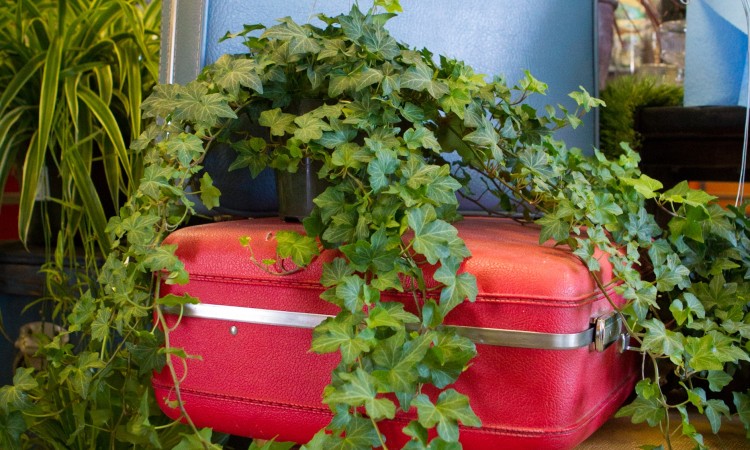 Photo Via DigPhx.com
Photo Via DigPhx.com
There comes a time in every man or woman’s life when one thinks, “I could garden! How hard could it be?” Maybe we drive past a nursery, snack on fresh fruit at the local farmer’s market or sniff out the flowers at a nearby Trader Joe’s. We all get the gardening bug here and there…
The truth: with proper knowledge and planning and a solid foundation, gardening really isn’t that difficult. To make it better, according to Dig It Urban Gardens & Nursery owner, Ryan Jerrell, organic, home-grown fruits and veggies are incredibly nutrient–dense, making them “incomparable” to the ones sold at grocery stores.
Dig It Urban Gardens & Nursery is a boutique garden center in the heart of Phoenix that prides itself on having the most diverse mix of plant material, covering all the niche interests like bonsais, succulents, roses and more in addition to carrying the more traditional items like citrus trees or various fruits and veggies.
Unlike many big-chain plant stores, Jerrell says Dig It focuses on selling what’s in season and likely to grow well, under the right care of course. Interested consumers can venture in seven days a week, 8 a.m. to 5 p.m. and speak with staff about what products to grow when and how best to grow them.
For some quick tips though, AZFoothills.com asked Jerrell a few curiosity questions:
What plants are best and most popular to grow during the spring-summer seasons?
Melons, pumpkins, tomatoes, squash varieties and peas are some of the best and most popular fruit and veggie picks. Pumpkins are especially popular for people who want them at Halloween.
We know Dig It really focuses on organic products. Why is organic better than non-organic?
Without getting too technical…whatever you’re putting in, it becomes a part of you in some way, shape or form. Being organic means that you’re not ingesting metals or remnants of pesticides or insecticides. For me, what it comes down to is wanting people to understand you are what you eat. [Eating organic] is one of the best ways to gain control over what you put in your body. You have to believe that if [the chemicals] are killing things [like weeds], there’s no way it doesn’t affect you. What you put into your system can have a positive effect or negative effect. Maybe that negative effect will kill you in 20 or 30 years, but it’s still there, and it doesn’t have to be.
Will beginners have a hard time learning how to garden?
My business card has my cell phone number on it, and Tim, my business partner, has his cell phone number on his business card. I hand my card out and tell people if there’s a problem, contact me. If there are plant issues, call us, send us pictures, whatever. The goal is to make it so it’s not so intimidating for people to take it on.
How much time should people expect to spend on their plants every day?
I tell people when it comes to plants, there are different ways to water them, different ways to fertilize them, and different ways to maintain them. So there are going to be people who may go out for 10 [to] 20 minutes every morning, and those people may do their watering by hand and they may be fertilizing more regularly. Then there are the people that only have time on the weekends [who] may need an automatic watering system. We…say, ‘Alright, you can go out on a Saturday for 30 minutes and still have the same success as someone who goes out every single morning.’ So I think you can do it either way, and one’s not better than the other; it just has to be set up properly.
How long does it typically take for plants to grow?
Anything we have, you’re within a one month to say 60 days period, and then we have the bigger melons, say pumpkins or watermelon, and those, the focus is on growing a plant that has enough foliage to become a protective area for the plant to grow under the leaves. They need more time to develop into something that’s edible. That’d be like a 90 to 100 day window just because they’re bigger.
What’s the minimum size necessary to grow plants?
We make a 24-inch box that you typically see trees grown in, but we tell people [they] can take one and…very effectively grow a tomato plant, maybe an artichoke and a few herbs and have success with that. You may not have as much variety, but I think sometimes people think they have to have this lot or a 10X10 space, which obviously is ideal, you can get more, but for someone that even has a patio, you can take this 24–inch box and a couple bags of soil, and in a couple months you have a little…plant that’s producing. You can do that.
What’s your biggest tip for gardening organic?
The most important thing is the soil. Soil preparation – I can’t stress that enough. A lot of times people want to buy a bag of soil, go home, plant it, [but] you [also] want things that make the plant function with the soil as effectively as possible.
What’s the price range for Dig It’s home gardening organic line?
We do everything at a $2.49 per container price point; container sizes vary.
For more information, visit DigPhx.com
